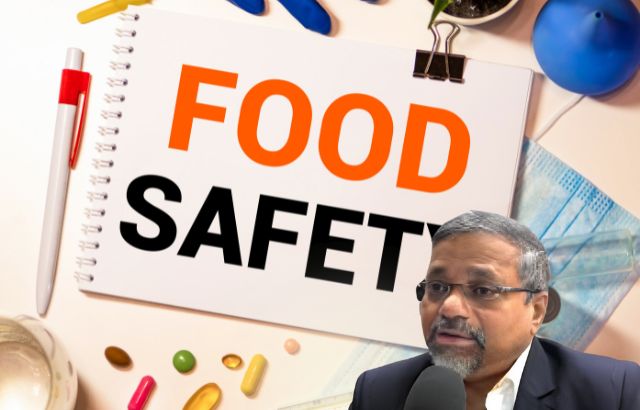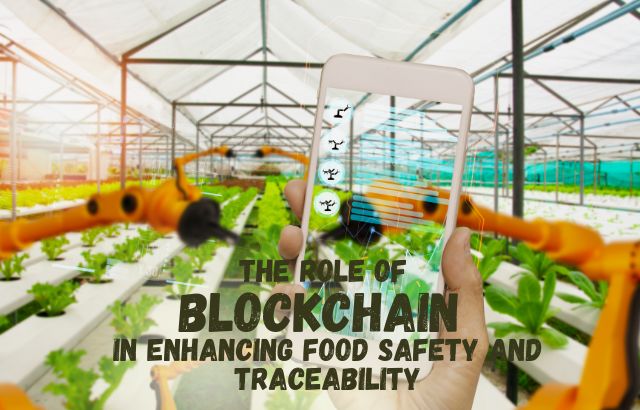In recent years, the food industry has faced numerous challenges regarding safety, quality, and transparency. Issues such as foodborne illnesses, contamination, and fraudulent labeling have raised concerns among consumers and producers alike. To address these challenges, blockchain technology has emerged as a powerful tool for enhancing food safety and traceability.
What is Blockchain?
Blockchain is a decentralized, distributed ledger technology that securely records transactions across many computers. This ensures that the recorded data cannot be altered retroactively, providing a transparent and tamper-proof system. Each transaction or record is grouped into “blocks” and linked together in a chronological chain, hence the name “blockchain.”
How Blockchain Enhances Food Safety

1. Improved Traceability
One of the primary benefits of blockchain in the food industry is enhanced traceability. With blockchain, every step of the food supply chain—from farm to table—can be recorded and tracked in real time. For instance, if a batch of lettuce is found to be contaminated, producers can quickly trace its origin and pinpoint where the contamination occurred. This rapid response minimizes health risks and reduces the impact of recalls.
Example: In 2017, Walmart partnered with IBM to use blockchain technology to trace the origin of its mangoes. The pilot program reduced the time taken to trace the source of a mango from six days to just 2.2 seconds.
2. Increased Transparency
Blockchain fosters greater transparency by allowing all participants in the supply chain access to the same data. This transparency can help consumers make informed choices about the food they purchase. They can verify claims related to organic certification, ethical sourcing, or the absence of genetically modified organisms (GMOs).
Example: Companies like Whole Foods have explored using blockchain to give consumers access to detailed information about their food products, including sourcing and production practices.
3. Enhanced Security and Reduced Fraud
By utilizing blockchain, companies can create an immutable record of transactions, which reduces the likelihood of fraud. Food labeling fraud, such as misrepresenting the source or quality of food products, can be significantly mitigated.
Example: In the seafood industry, companies like TunaTrace are using blockchain to ensure that the fish sold in stores is sourced sustainably and ethically, helping to combat illegal fishing practices.
FAQs on Blockchain Food Safety answered by Jaiguru Kadam

Q1: How does blockchain technology work in food traceability?
A: Blockchain technology records every transaction in a decentralized ledger, allowing all participants in the food supply chain to access and verify the information. This ensures that every step—from production to distribution—is recorded and traceable.
Q2: What are the benefits of using blockchain for food safety?
A: Benefits include improved traceability, increased transparency, enhanced security against fraud, and faster response times in case of contamination or recalls.
Q3: Are there any challenges in implementing blockchain in the food industry?
A: Yes, challenges include the need for industry-wide standards, the integration of existing systems, and the initial costs of implementation. Additionally, educating all stakeholders about blockchain technology is essential for its successful adoption.
Q4: Can consumers access blockchain data about their food?
A: Yes, many companies are developing consumer-facing applications that allow shoppers to scan products and access detailed information about their origin, production practices, and safety records.
Q5: Is blockchain technology environmentally friendly?
A: While blockchain can help improve sustainability practices in food sourcing, the energy consumption of certain blockchain networks (like Bitcoin) has raised environmental concerns. However, many newer blockchain solutions are focusing on reducing their carbon footprint.
Conclusion

Blockchain technology holds immense potential for revolutionizing food safety and traceability. By improving transparency, enhancing security, and enabling rapid response to food safety issues, blockchain can help build a more trustworthy food supply chain. As the food industry continues to evolve, embracing these innovations will be crucial for ensuring the health and safety of consumers.
By understanding and implementing blockchain solutions, stakeholders can pave the way for a safer and more transparent food system.












